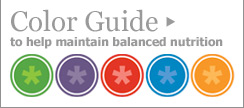Stage
How long is too long for your homemade purées?
Chances are that if you are taking time out to prepare a delicious mango-blueberry puree for your baby, that you are going to make more than one 3-ounce serving in the process. Sure, there are times when you will make just enough of something to cover a meal. For the most part, if you have decided to make your own baby food, then there are probably several mango-blueberry breakfasts in your child’s future. And since variety is the spice of life, remember the following when storing your home made baby food batches.
Storage containers:
Store purées, smoothies, mushes and mashes in clean, covered containers in the refrigerator or freezer. If you are going to keep the food for longer than a couple of days, it should be frozen. Choose a container for the freezer that can also be covered and that is appropriately sized for single serving portions. Flexible storage pods or ice cube trays are popular choices – just make sure they can be sealed. Once frozen solid, you can store the puree pops in a plastic freezer bag.
Use by dates:
Unlike store-bought food, there isn’t a use by date on the pea puree you made last Saturday. It is important to note that baby food spoils faster than other prepared foods because it has been pureed or ground. A general rule of thumb is to use any refrigerated purees within 1-2 days of making, and frozen purees should be used within 1 month. Fruit and vegetable purees will last longer in the refrigerator (2-3 days) than meats or eggs (1 day). Discard any food containers that are bulging as they may contain a gas produced by C botulinum, which causes botulism. If you’re not sure, it’s always better to discard the item in question. Once a frozen food has been defrosted, it cannot be refrozen. Throw away any uneaten food – saving leftovers is only for big kids, when purées have been replaced by spaghetti and meatballs.
Heating instructions:
Heat food to hot and then let it cool to a lukewarm temperature (not hot!) before feeding baby. This will help to destroy toxins. To heat, put frozen cubes or refrigerated puree in a clean glass custard cup – or similar dish – and set it in a pan of hot water to thaw. You can also heat food in a microwave – heat 4 ounces of food for 15 seconds at a time. Stirring and testing the temperature before feeding to baby.
A tip, a trick and a consideration:
- Never put a jar of baby food in the microwave or feed baby from the jar. Basically, keep your baby food storage containers strictly storage containers, using different dishes to heat and serve.
- Some foods just don’t store well. Bananas brown when frozen as a puree and don’t look especially appetizing when reheated. In this case, try mashing just what you need and freezing the rest of a banana in slices. Another offender is mashed avocado, which browns in storage. Add a little bit of lemon juice to help preserve its color.
- You don’t have to make every dollop of food that goes into your baby’s mouth to ensure that she is getting the very best. Commercial baby cereal, for example, is iron-fortified, and iron is a mineral that is needed to carry oxygen through blood and for brain development. If you do make your own cereal, consider mixing in a little chicken stock or iron-fortified formula for an extra iron boost.
Above all, always consult your pediatrician for recommendations on food choices and changes to your child’s diet.






